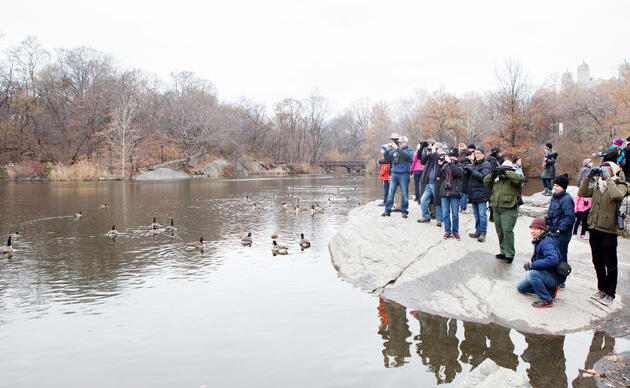The vast majority of the peregrine falcons in the Midwest today are a result of the reintroduction efforts. All captive raised birds reintroduced into the wild have been banded. Furthermore, most of the nest sites are monitored. Whenever possible, young birds produced in the wild are also banded before they leave the nest. All birds marked in this manner can be identified by their individual leg markings.
Although different approaches have been used elsewhere, in recent years a uniform approach to banding has been followed in the Midwest.
The band on the right leg is a traditional U.S. Fish and Wildlife bird band that has been color-coded. Right leg bands on captive raised birds are gold in color. Peregrines produced in the wild wear purple bands.
The left leg band is used for individual identification. These bands are marked with unique combinations of letters and numbers. To increase the number of available combinations, the characters are often placed on their side. The left bands are also color coded. Most of the bands used in the Midwest have been black on top and either red or green on the bottom.
For example, Dakota Ace has a faded gold band on his right leg. This indicates that he was raised in captivity and introduced into the wild as part of the restoration efforts. His left band is black over red. The top letter is a sideways “H”. The bottom letter is a “D” oriented in the conventional manner. This band is recorded in the database as b/r *H/D. The asterick denotes the sideways configuration.
All birds banded in the Midwest since 1981 are listed in the database now maintained by the Midwest Peregrine Society. In order to make an individual identification, all portions of the left band must be read.
Even if the bands can not be “read”, their presence does provide fairly reliable confirmation that the bird is a peregrine. Conversely, any unbanded raptor observed in Fargo during the nesting season is almost certainly a different species. For example, Cooper’s hawks have become a common nesting bird in areas where large trees are present. They are frequently mistaken for peregrines.
How you can help, right now
Support Rowe Sanctuary
Help us continue our important work for Sandhill Cranes and other birds that rely on the Platte River ecosystem!
Support Spring Creek Prairie
We are able to provide and protect this amazing landscape only with the help of private donations. Help us keep the trails open and the prairie thriving!
Support Audubon in the Great Plains
Support our work with local landowners, urban woods and prairies, and education programs in Nebraska and the Dakotas!




